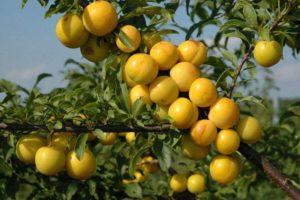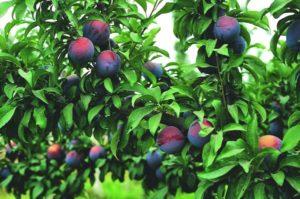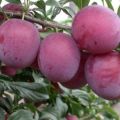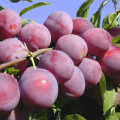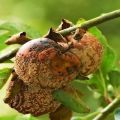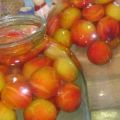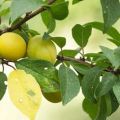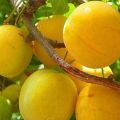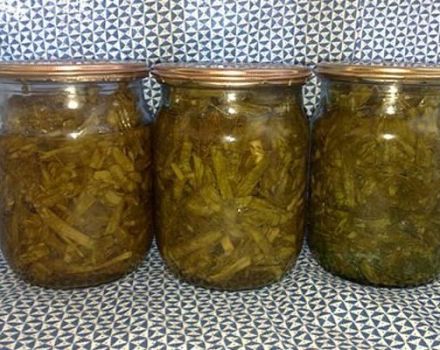How to properly cut cherry plum in summer, spring and autumn, crown formation diagram
Although cherry plum prefers to grow in southern regions, more and more trees can be found in regions with cool climates. And in order for the tree to bear fruit abundantly every year, it is necessary to take care of it. One of the important procedures is pruning and shaping the crown of the cherry plum.
Purpose and necessity of formative works
Pruning cherry plum trees is divided into four types, depending on the purpose of its implementation. In any case, the procedure must be carried out regularly so that the tree grows healthy and gives a good harvest. Varieties of cherry plum pruning:
- Formative - aimed at forming the crown. It is carried out less often. Formative pruning is carried out in the second year after planting the seedling in open ground.
- Sanitary - mostly held in autumn. With sanitary pruning, all diseased and damaged branches are cut off from a tree.
- Rejuvenating - carried out on old trees, if the yield begins to decline. Promotes the emergence of new shoots on the tree.
- Thinning - cut off part of the shoots if the crown has become too thickened and the fruits do not have enough sunlight because of it.
Before proceeding with the procedure, you need to learn how to properly cut the cherry plum, depending on the purpose of its implementation.
The advantages of the procedure are:
- increased fruiting and improved fruit quality;
- the ability to regulate yields by pruning fruit buds;
- correct pruning allows you to achieve uniform growth of branches;
- promotes the appearance of fruits on the skeletal branches.
Another advantage of the procedure is the removal of diseased and underdeveloped branches.
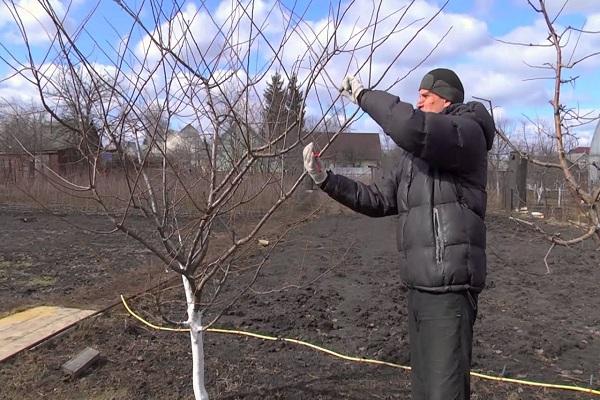
What is needed for the procedure
In order to properly cut the cherry plum, it is necessary to prepare in advance all the tools for the work.
Required set of tools:
- secateurs;
- gardening scissors;
- garden saw;
- gloves;
- loppers;
- garden hacksaw.
All the tools with which it is planned to cut the branches of cherry plum must be sharpened in advance. For cutting, only sharpened tools are used that do not leave creases on the branches.
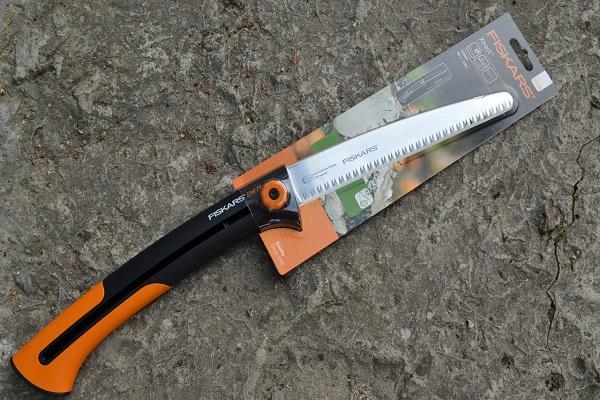
Recommended timing of pruning
Cutting times are determined depending on the type of work. Basically, the main procedures for removing cherry plum branches are carried out in spring and autumn. In the summer, only anti-aging work is carried out.
Spring
The most favorable period for cutting the crown is early spring, when the sap flow has not yet begun at the cherry plum. Formative pruning is carried out before bud break in March-April. If necessary, pinching is also carried out in the spring, in the second half of April - early May. During this period, cherry plum is quickly restored, and pruning does not affect further fruiting. All tree pruning activities should be completed by the end of spring.
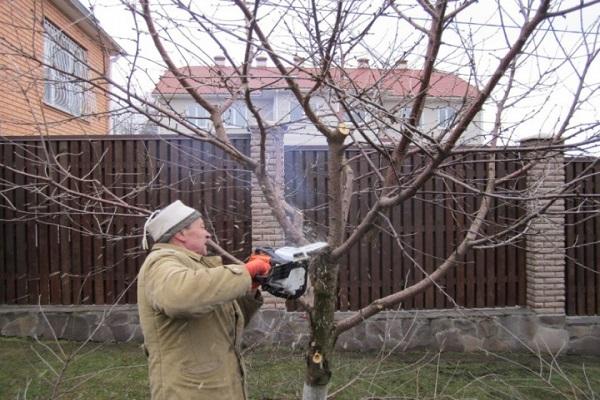
Summer
Cherry plum should be trimmed in the summer if a rejuvenating procedure is planned. Works are carried out in June-July. There is no need to carry out tree rejuvenation work every summer. Summer pruning of cherry plum is recommended as rarely as possible, since during this period sap flow is active, and after the procedure the trees are restored for a long time.
In addition, cherry plum can flow around with gum, which contributes to the development of fungal diseases.
Fall
It is necessary to cut the cherry plum in the fall in case of a sanitary procedure. The timing of this type of work falls on the second half of October - early November. It is necessary to complete this type of work before the onset of cold weather. It is not recommended to touch the trees in winter.
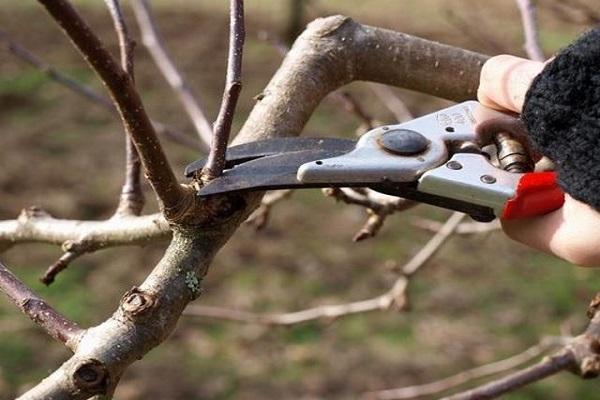
Types of tree pruning
There are only a few types of pruning:
- formative;
- sanitary;
- thinning out;
- anti-aging.
In most cases, all types of cherry plum pruning are carried out at once in one day. Unless the sanitary facility is left for the fall or before the onset of cold weather it is repeated if necessary.
Pruning rules
Work on carrying out the removal of branches from cherry plum should be carried out in accordance with all the rules. All four types of the procedure differ in small nuances, but in general the technique is similar.
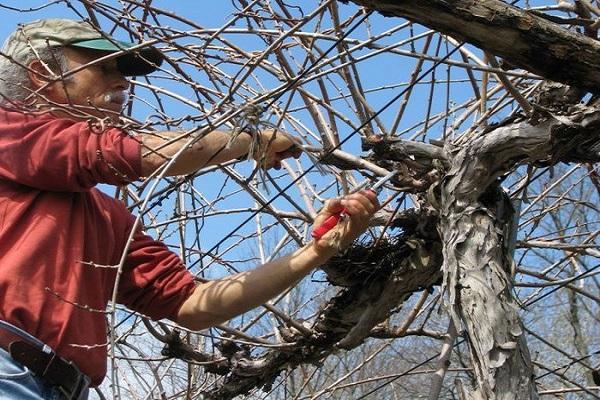
Shortening branches and shoots of cherry plum
The branches are shortened when the crown has become too thick and the branches are too long. The branches are shortened after planting the seedlings to a permanent place. Also, the procedure is performed on mature trees when the growth has stopped growing. The top of the cherry plum cannot be cut off by more than one meter. If you cut off the top more, it will begin to overgrow with side shoots one meter long.
Thinning branches at cherry plum
The scheme for pruning cherry plum in summer will come in handy if the branches are thinned out at the cherry plum. Thinning is necessary for mature trees with a well-developed crown. The procedure is performed on plants that are more than three years old.
How to properly thin out:
- If two stems grow in the same plane, then one is cut off.
- If a crooked stem grows that interferes with everyone else, it is also removed.
Also, all weak and underdeveloped branches that do not bear fruit are cut down, but the tree spends nutrients on them.
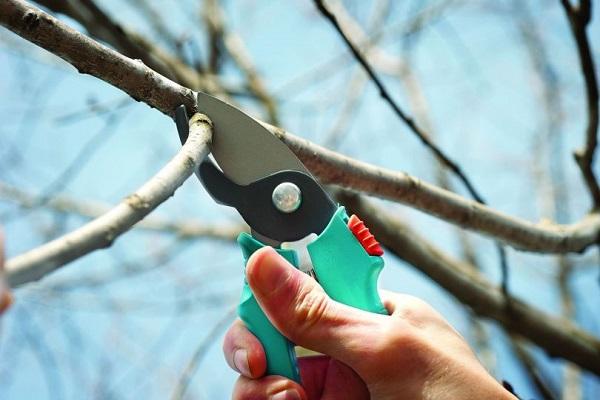
Rules for cutting stem branches
How to cut off the stem branches of cherry plum:
- It is not recommended to leave the stumps during cutting, as a sooty fungus may appear on them, which will later spread to the entire tree.
- Slices large in diameter must be lubricated with garden pitch. Small ones can overgrow on their own.
- In the process of thinning the cherry plum, the branches that grow inside the crown are cut off.
It is also recommended to remove all diseased, deformed and crooked branches.
The nuances of the formation of individual varieties
The crown formation scheme depends on the variety of cherry plum. Trees are tree-like, bushy, hybrid and columnar. Before proceeding with pruning, it is important to study the features of the work on each type.
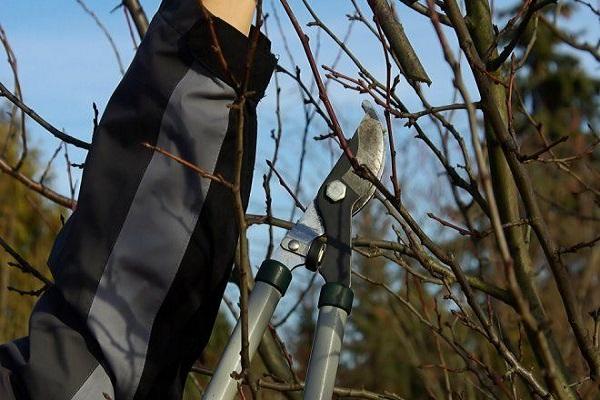
Tree-like
Most of the crop grows on shoots 7-9 years old. Therefore, it is recommended to cut branches only inside the crown. In this case, dry, damaged and growing branches are cut down. Then specimens with highly branched and slightly branched shoots should be shortened.In the event that the annual increase is less than 50 cm, then the cherry plum is not shortened.
With a significant decrease in the growth of branches, shortening is carried out on 2-3-year-old wood. And if it stopped completely, then at 5-6 years old.
Upon reaching the age of 25, a rejuvenating cherry plum pruning is performed. Such a procedure is carried out on old trees in lean years, since the cherry plum will recover for several years after it.

Bushy
On bushy varieties, fruits appear on annual shoots. Typically, these varieties do not need pruning for the first 3-4 years after planting the seedling. If you do not cut the plant, then fruiting passes to the branches growing on the periphery. In the event that the procedure has not been carried out for too long and the tree is completely overgrown, then the formation of the crown takes place in stages over 2-3 years. First, the crown is thinned out, dry and damaged branches are removed. Then the next year, part of the shoots is shortened.
Hybrid
Hybrid varieties are characterized by the fact that they give an abundant increase in a year. Up to about 1 m per fruiting season, therefore, such varieties will have to be cut most often, almost annually. Every spring, the crown is thinned out, leaving several skeletal branches. Deformed, weak branches with the least number of shoots are cut. Thinning allows you to open access to sunlight for those branches that are constantly bearing fruit.
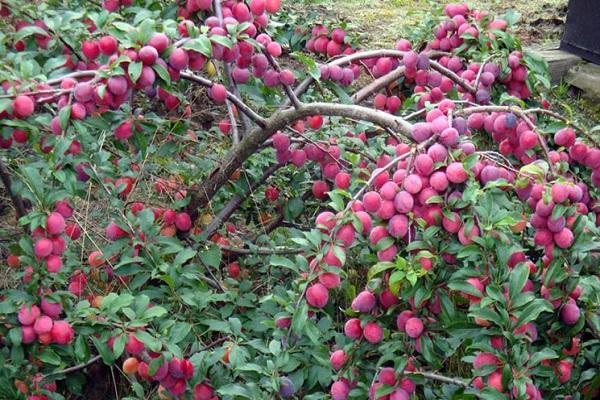
If you do not thin out the crown, the yield gradually decreases, the fruits become smaller and become sour in taste. As soon as the yield began to decline, and the fruit tastes sour, the branches are thinned. It is usually carried out on 2-3-year-old wood. If the annual growth is not fast, then by 5-6 years.
Columnar
The purpose of pruning branches on columnar varieties is to remove some of the shoots on the main conductor. Such a measure will help reduce the growth of the annual growth of branches and improve the quality of the cherry plum yield. At the same time, it is important to properly cut unnecessary branches. For the procedure, only well-sharpened secateurs are used. This rule applies to pruning on all types of trees. If you use a blunt sector, there will be creases in the cuts, and this can lead to the spread of diseases.
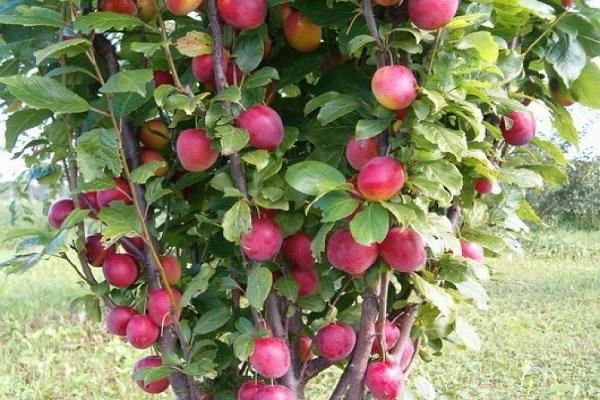
Caring for the tree after pruning
After cutting, you need to pay attention to the care:
- During summer pruning, trees are watered abundantly with warm water, and so that the soil does not dry out, the soil around the trunk is mulched with peat or sawdust.
- Pruning is recommended on a cool, cloudy day. In the rain and a few days after it, it is undesirable to cut branches. The crown must dry out before the procedure.
- Immediately after the procedure, the cut sites are treated with garden varnish, which prevents the appearance of fungal and viral diseases. The thickness of the garden varnish should not be less than 5 mm. It is not recommended to use fresh manure, paint or lime for treatment.
- It is not recommended to cut off more than 1/3 of all branches at once. This will negatively affect the health of the cherry plum.
After the procedure, the plant will recover faster with mineral and organic fertilizing. The type of dressing is selected depending on the growing season. In the fall, use organic. In the spring, nitrogenous fertilizers are applied to the soil, and in the summer, phosphorus and potash fertilizers.
